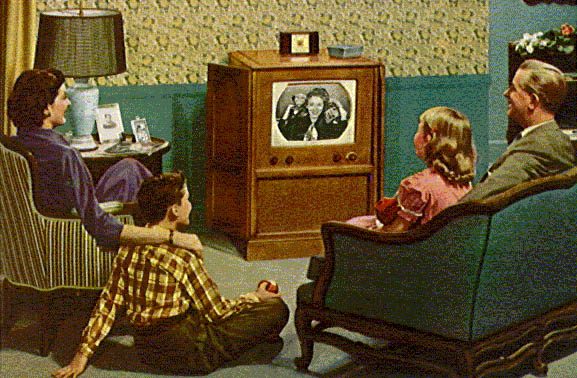
Watch old tv Through the Ages: From Inception to Modern-Day Wonder
Television, a ubiquitous device that has become an integral part of our lives, has come a long way since its inception.
Its evolution has transformed the way we receive information, consume entertainment, and connect with the world. In this comprehensive article,
we delve into the fascinating history of television, tracing its roots, major milestones, and technological advancements.
So, grab a cup of coffee, sit back, and let’s embark on a journey through time as we explore the captivating world of television.
Just for fun, at the end of the article, we are sharing links with you to watch real old TV shows from the 1950s to the 2000s. Check them out!
-
The Inception of Television
The concept of television had been brewing in the minds of inventors and scientists for several decades before its realization.
The pursuit of transmitting moving images across vast distances traces back to the 19th century.
Notable inventors like Paul Nipkow, Vladimir Zworykin, and John Logie Baird made significant contributions that
laid the foundation for what we now know as television.
- 1884: Paul Nipkow, a German engineer, patented the Nipkow disk, a spinning disk with a series of holes arranged in a spiral pattern. This invention formed the basis for mechanical television.
- 1923: Vladimir Zworykin, a Russian-born American engineer, filed a patent for the iconoscope, the first practical electronic television camera.
- 1925: John Logie Baird, a Scottish inventor, successfully transmitted the first television image using a mechanical system.
-
The Era of Mechanical Television

The early stages of television were dominated by mechanical systems, which involved the scanning and transmission of images through mechanical means.
- 1927: Philo Farnsworth, an American inventor, demonstrated the first fully electronic television system using his Image Dissector camera tube.
- 1936: The BBC launched the world’s first regular high-definition television service, broadcasting to the public with a resolution of 405 lines.
-
The Rise of Broadcast Television
The post-World War II era witnessed a rapid expansion of television broadcasting, leading to its widespread adoption in households around the world.
This period marked the shift from mechanical to electronic television systems.
- 1948: CBS introduced the first color television system, but it struggled to gain widespread acceptance due
- to the high cost and compatibility issues.
- 1951: The advent of commercial television began as networks started broadcasting a variety of programs,
- including news, sports, and entertainment.
- 1953: The introduction of NTSC (National Television System Committee) standards for color television paved the
- way for the widespread adoption of color broadcasting.
-
Television Goes Global
Television rapidly expanded beyond the borders of its birthplace, with countries around the world embracing the medium and developing their own broadcasting systems.
- 1954: The first television broadcast in Japan took place, with NHK (Japan Broadcasting Corporation) launching regular programming.
- 1967: The United Kingdom launched its second television channel, BBC Two, expanding the offerings and availability of television programs.
- 1978: The launch of the first direct-to-home satellite television service, Home Box Office (HBO), in the United States revolutionized the television industry.
-
The Age of Cable and Satellite Television
The late 20th century saw significant advancements in television technology, leading to the emergence of cable and satellite television, offering viewers a broader range of channels and programming choices.
- 1981: The first music video channel, MTV (Music Television), revolutionized the music industry
- by providing round-the-clock music videos.
- 1994: The launch of DVB (Digital Video Broadcasting) standards enabled the transition from analog to digital television
- broadcasting, improving picture and sound quality.
- 1996: The rise of satellite television providers such as DirectTV and Dish Network in the United States offered viewers a multitude
- of channels and expanded access to international programming.
- 2005: The emergence of Internet Protocol Television (IPTV) allowed viewers to stream television content over the internet, paving
- the way for the rise of on-demand services and streaming platforms.
- 2010: The launch of popular streaming services like Netflix and Hulu revolutionized the television landscape,
- offering viewers the flexibility to watch their favorite shows and movies at their convenience.
-
The Digital Revolution and High-Definition Television
Advancements in technology and the transition from analog to digital broadcasting brought about
- significant improvements in picture and sound quality, leading to the widespread adoption of high-definition television (HDTV).
- 1996: The first high-definition television broadcasts began in the United States, offering viewers a more immersive
- and detailed viewing experience.
- 2006: The International Telecommunication Union (ITU) standardized the digital television transmission format, known as DTV,
- ensuring global compatibility and promoting the adoption of digital television worldwide.
- 2009: The launch of HDTV services became more prevalent, with broadcasters and cable/satellite providers
- offering high-definition channels to cater to the growing demand for superior picture quality.
-
Television in the Digital Age
The 21st century has witnessed a rapid convergence of television and digital technologies, transforming the medium in profound ways.
- 2007: The introduction of Apple’s iPhone, followed by other smartphones and tablets, a
- llowed viewers to access television content on their portable devices, blurring the boundaries between traditional television and mobile devices.
- 2012: The rise of smart TVs integrated internet connectivity and interactive features, providing viewers
- with access to streaming services, social media, and a wide range of apps directly on their television screens.
- 2015: The launch of 4K Ultra High Definition (UHD) television brought about a new level of visual clarity, with four times
- the resolution of standard HDTV.
- 2020: The COVID-19 pandemic led to a surge in television viewership as people around the world s
- ought entertainment and information while staying at home, highlighting the medium’s enduring significance.

The Rise of IPTV and Future Prospects
In recent years, one of the most significant advancements in television technology is the emergence of Internet Protocol Television (IPTV). IPTV has revolutionized the way we consume television content, offering viewers the ability to watch their favorite channels and movies anywhere in the world using just an internet connection.
Unlike traditional broadcast or cable/satellite television, IPTV utilizes internet protocols to transmit television content, allowing for greater flexibility,
interactivity, and personalization. Viewers can access a vast array of channels, on-demand content, and even interactive features through IPTV services.
IPTV services typically come in the form of applications or platforms that can be installed on smart TVs, smartphones, tablets, or dedicated set-top boxes.
These services provide access to live TV channels, video-on-demand libraries, catch-up TV, and even features like pause, rewind, and fast-forward.
The rise of IPTV
The rise of IPTV has been facilitated by advancements in internet speeds, the proliferation of broadband connections, and the increasing adoption of smart devices. Streaming services such as Netflix, Hulu, Amazon Prime Video, and Disney+ have played a pivotal role in popularizing the concept of IPTV.
With IPTV, viewers can choose from a wide range of subscription-based services or opt for free-to-air options, which often rely on advertising for revenue.
This flexibility and freedom of choice have transformed the television landscape, allowing viewers to curate their own personalized viewing experiences.
Looking ahead, IPTV is expected to continue its growth trajectory and shape the future of television.
The convergence of IPTV with other emerging technologies like artificial intelligence, virtual reality,
and augmented reality holds immense potential for creating immersive and interactive viewing experiences.
In future articles, we will delve deeper into the world of IPTV, exploring its technologies, business models, content distribution methods, and the impact it has had on the traditional television industry. Stay tuned as we unravel the exciting possibilities and advancements in
IPTV that are reshaping the way we watch television.
Conclusion
From its humble beginnings as a mechanical invention to its current status as a ubiquitous digital medium, television has undergone remarkable transformations throughout its history. From the iconic black and white sets to the advent of color, cable television, satellite broadcasting, and the rise of streaming services, television has evolved to cater to the changing needs and preferences of viewers.
Today, television continues to captivate audiences worldwide, offering a vast array of channels, programs, and interactive experiences. As technology continues to advance,
we can only speculate about the future of television. However, one thing is certain—television will remain a powerful medium, bridging gaps,
entertaining, informing, and connecting people from all walks of life for generations to come. So, sit back, relax, and enjoy the fascinating journey of watching old TV, while embracing the marvels of modern television technology.
As promised, here are some links to watch old TV shows and relive the moment with these time machine websites.
- 50’s TV : click here
- 60’s TV : click here
- 70’s TV : click here
- 80’s TV : click here
- 90’s TV : click here
- 2000’s TV : click here
- IPTV 2000’s + : click here

